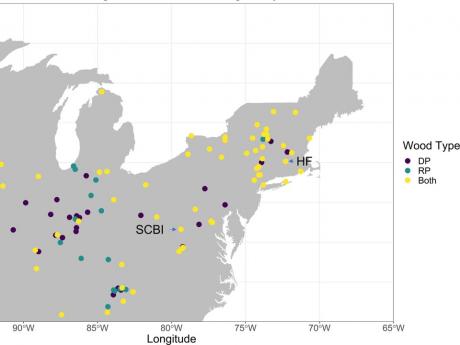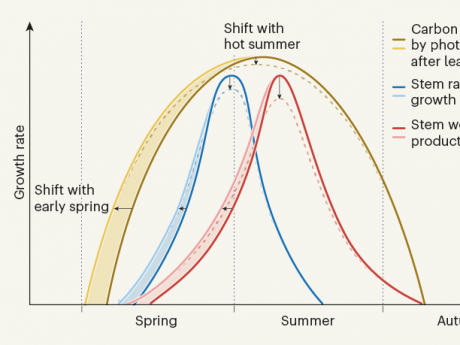ForestGEO Scientists Analyze Impact of Warmer Springs on Carbon
A new Nature paper by Dow, et al. uses dendrometer data from Harvard Forest and Smithsonian Conservation Biology Institute Forest Dynamics Plots, plus tree-ring records from 108 forests across the eastern US to examine the impact of warmer springs on carbon sequestration capacities of forests. Contrary to the expectations of many vegetation models, the data from Dow, et al. indicates that warmer springs do not lead to increased wood growth. Consequently, current vegetation models are overestimating the power of forests to mitigate climate change. This paper was lead-authored by Cameron Dow who began this manuscript with colleagues during his internship in Kristina Anderson-Teixeira’s ForestGEO Ecosystems & Climate Lab.
With regard to potential areas of future research, Cameron says, “Working on this paper has really opened my eyes to not only how influential the changing climate is to tree growth, but also to how important interspecific physiological differences are to allowing different species to either take advantage of the changing climate, or to suffer because of it. Being born and raised in an area with primarily deciduous trees, I've grown up wondering about how they work and if they were affected by every little period of abnormal weather we'd get. So, my upbringing and the many remaining questions about deciduous trees has me very excited about the future research I want to do. I think there's so much we don't know about how our deciduous trees work, and I'm excited to keep working towards figuring them out!”






